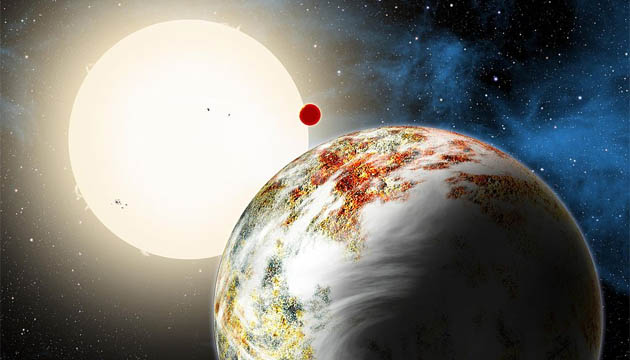
How big can an Earth-like planet be? Astronomers thought they had a pretty good handle on this question but have just been given a fresh example for how nature never ceases to outpace our imaginations and show us something unexpected.
That example is Kepler 10c, an extrasolar planet astronomers didn’t think could exist: a heavyweight “Earth” two-and-a-half times larger and 17 times more massive than our own welterweight home world.
Kepler 10c was originally spotted in the data from NASA’s Kepler spacecraft, the most productive extrasolar planet hunter to date. Its diameter was measured to be 2.3 times that of Earth’s, but at the time its mass was unknown. Common wisdom in the planetary formation community was confounded when later observations with the HARPS-North instrument at the Telescopio Nazionale Galileo on the Canary Islands’ La Palma discovered that Kepler 10c weighs in at 17 times the Earth’s mass.
Before this discovery, planets with diameters between 1.7 and 3.9 that of Earth were classified as “gas dwarfs“: planets expected to have a heavy rocky core surrounded by an accumulated thick atmospheric envelope, more like a mini-Neptune than a maxi-Earth. But Kepler 10c’s calculated density pegs it as a rocky world like Earth: mostly solid, perhaps with a thin coating of atmosphere.
It was believed that such a massive solid planetary body would have developed a very thick sheath of gases during its formation, gravitationally snowballing to become a Neptune or even Jupiter-sized gas giant.
